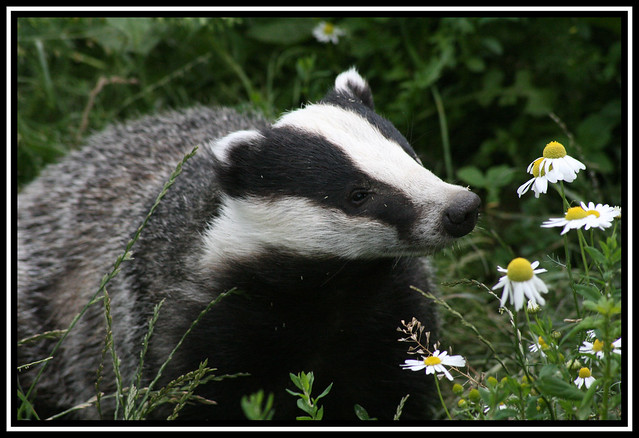 |
| Photo credit Sally Longstaff on Flickr |
The controversial culling of badgers to stem bovine tuberculosis (TB) in UK herds seem to have got off to a very rocky start.
After a trial run which showed a “modest improvement” in TB incidence when about 70% of badgers in an area had been wiped out, the task set by the government was to cull at least that proportion in areas where herds are affected.
Because badgers scatter when someone's trying to kill them, and because eliminating fewer of the animals (30% in the trial run) actually makes the TB worse, it was stipulated that the cull must be completed within “not more than six consecutive weeks” (National England license terms) to avoid these pitfalls.
The problem was how to know the number of badgers in the area in the first place so that a figure could be put on the “70%” to be killed. An under-estimate risked making the TB problem worse. An over-estimate risked making the task impossible, but in the 12 months before the cull began, the government managed to slash its estimate by two-thirds (COMMENT That's nearly 70% of badgers gone before the first shot was fired).
“They keep moving the goal-posts on how many badgers exist and how many need to be killed but, whatever the figures, it is clear the system has failed”.(And, the goal-posts which defined the 'essential' time-constraints for the cull seem to have fallen down altogether.)
In response to the RSPCA, Owen Paterson
said
“I am not moving anything - the badgers are moving the goal-posts. You are dealing with a wild animal, subject to the vagaries of weather, disease and breeding patterns.”
The UK's leading badger expert, Prof
Rosie Woodroffe, commented that such a drastic change in the badger
population in the space of 12 months would be “very, very unusual”.
OUR COMMENT
With the improvement in TB levels found to be no more than “modest” in the trial cull, it's not too clear why these findings were used to set any goal-posts in the first place. The science used to justify killing badgers doesn't seem any more sound than that used to justify the disruption of genomes.
Mr. P's drive to push GM development onto the UK research agenda doesn't seem to have any more solid a basis than the badger business [1]. He's going to find out the hard way that genes are even better at moving the goal-posts than badgers: genes 'in the wild' also are subject to the vagaries of environmental stresses, disease and breeding.
No doubt when the artificial DNA which is currently scattering itself about due to human activity [2] finally becomes an environmental and human health problem, it will be the genes' fault for moving the goal-posts.
If you're interested in the true nature of living DNA which the biotech industry pretends it can manipulate like lego bricks, it's worth reading Mae-Wan Ho's Living with the Fluid Genome (2003). Available through the ISIS online bookstore.
Background
[1] WESTMINSTER ROLLING OUT THE RED CARPET FOR GM - July
2013
[2] GENE POLLUTION UPDATE 2013 - November 2013
SOURCE:
- Damian Carrington, 'Badgers
to blame' for cull failing to hit target,
The Guardian, 10.10.13
- Radio 4 News, 24.10.13
No comments:
Post a Comment
Thanks for your comment. All comments are moderated before they are published.